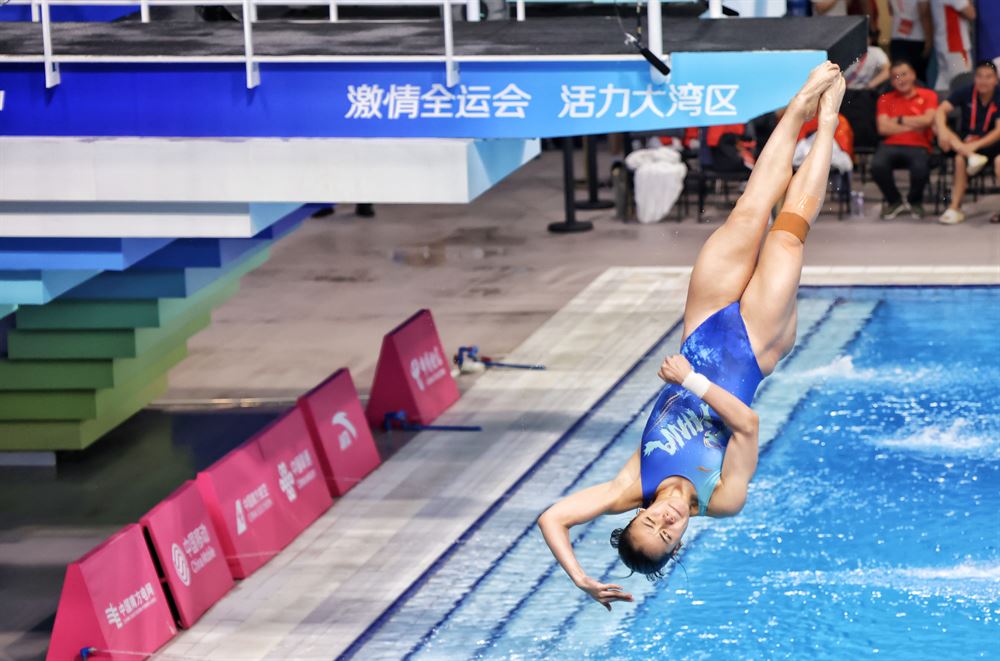
BEIJING - China's 15th National Games will open Sunday across the Guangdong-Hong Kong-Macao Greater Bay Area, marking the first time three regions have co-hosted the country's premier multisport event.
The games feature 34 sports with 419 events in the competitive program and 23 sports with 166 events in the mass participation program. More than 20,000 athletes are set to compete in the final phase.
First held in 1959, the National Games is China's largest multisport event. Beijing hosted the first four editions and the seventh. Shanghai and Guangdong have each hosted twice, and the games have also been held in Jiangsu, Shandong, Liaoning, Tianjin and Shaanxi.

Guangdong will host athletics, basketball, football and swimming competitions, among others. Hong Kong will host events including fencing, golf and beach volleyball, while Macao will stage table tennis, 3x3 basketball and women's volleyball.
"I'm proud and excited to see Guangdong, Hong Kong and Macao co-host the games," said Macao wushu athlete Li Yi, a gold medalist at the 2022 Asian Games. "It's a chance for Macao to showcase its vitality and advance our sports development."
ALSO READ: Historic torch relay sparks zest for National Games
One of the most anticipated events is the men's road cycling race Saturday. Riders will cover a 230-kilometer route, traveling across the Hong Kong-Zhuhai-Macao Bridge six times without interruption and passing through all three border ports at speeds exceeding 40 km/h.
"Every detail requires close coordination among the three regions," said Eric Chan Kwok-ki, chief secretary for administration of the Hong Kong Special Administrative Region government. "This collaboration not only enhances the Greater Bay Area's capacity to jointly host large-scale events but also deepens people-to-people ties."

The three regions are collaborating on joint travel packages and simplifying spectator access through policies such as cross-border vehicle access and 240-hour visa-free transit.
Organizers aim to make these the first carbon-neutral National Games, implementing green measures in construction, energy and operations.
ALSO READ: HK’s first National Games competition event kicks off

In Guangdong, more than 90 percent of the 75 venues have been upgraded from existing facilities as part of the low-carbon drive.
At Guangzhou's Tianhe Sports Center, a landmark built in 1984 that hosted the sixth and ninth National Games, photovoltaic panels have been integrated into carport structures. The 2,400-square-meter distributed solar system has helped make the venue China's first large-scale sports facility with near-zero carbon emissions.
"It is an old structure, so we needed to preserve its original look while meeting green standards," said Tan Haiyang, a local green design engineer. "We achieved both visual harmony and energy efficiency."

In Guangdong, more than 188 million kilowatt-hours of green electricity will power all venues, cutting carbon emissions by approximately 160,000 tons - equivalent to planting 8.88 million trees.
Beyond sports, the games provide a platform for one of China's most economically dynamic regions to showcase technological innovations, particularly in autonomous driving and low-altitude aviation.
In Guangzhou and Shenzhen, more than 100 autonomous "Robotaxi" vehicles will provide smart shuttle services, while a new pilotless aircraft will debut in real-world operations to transport personnel between venues.
"Without technology, many tasks would rely on manpower," said Guan Jianyong, an employee at a Shenzhen robotics company. "This year's games use tech to make transportation efficient, safe and sustainable."



